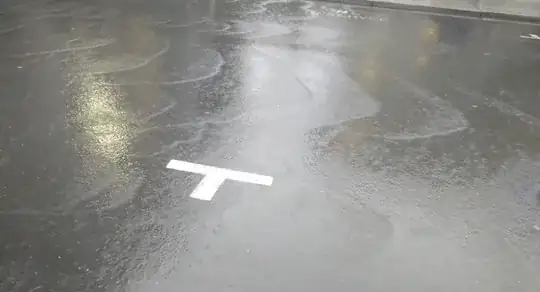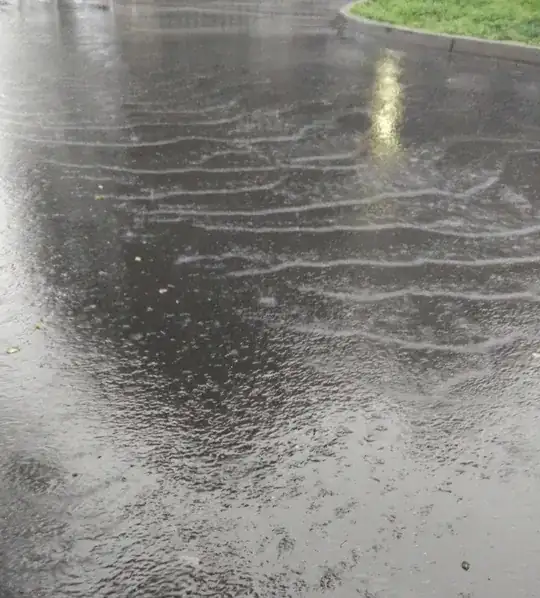This as a speculative explanation, which describes source fluctuation that might affect the volume of water flowing down the street. It's not the cause of the roll wave phenomenon (see Mike Stone's excellent answer), but it may affect it by increasing water volume sufficiently to disrupt the roll waves. I've observed micro-variations in flows in mountain streams that are not characterized by shallow shear flows.
When a cold front passes through warm air, it pushes the warm air up and over the advancing cell of cold air. Moving cold air forms a wedge and creates an inclined plane that the warm air climbs. Likewise, when a warm front pushes cold air, it climbs over the cold air, but since cold air hugs the ground more tenaciously than warm air, the inclined plane has a more gradual slope. In either case, warm air climbs into the atmosphere gradually, not straight up.
Clouds form when moist warm air reaches the condensation altitude, where rising warm air is cooled to the dew point. As the rising warm air cools and expands, the dew point changes as the pressure inside the cloud changes.
When the rising conveyor belt of moist air acquires the temperature of surrounding air it stops rising, and the dew point stops falling. Droplets begin to condense, and when they are large enough for the force of gravity to take them off the stalled conveyor belt of moist air, they fall as precipitation.
The process doesn't affect all the air in the cloud simultaneously. As saturated layers of warm air climb the incline of cold air, time provides opportunity for changes in micro climate that may vary the amount of precipitation falling off the top of the conveyor belt.
The roll waves you see on smooth pavement might be affected as the volume of flow varies with air currents and temperature conditions at the top of the atmospheric conveyor belt, where pressure, temperature, and dew point undergo micro-changes.
This could be verified by observing a strictly controlled release of water down the same surface. If characteristics of the waves that appear during a strictly controlled release differ from waves that appear during rainfall, it may indicate that source fluctuation has an effect.

